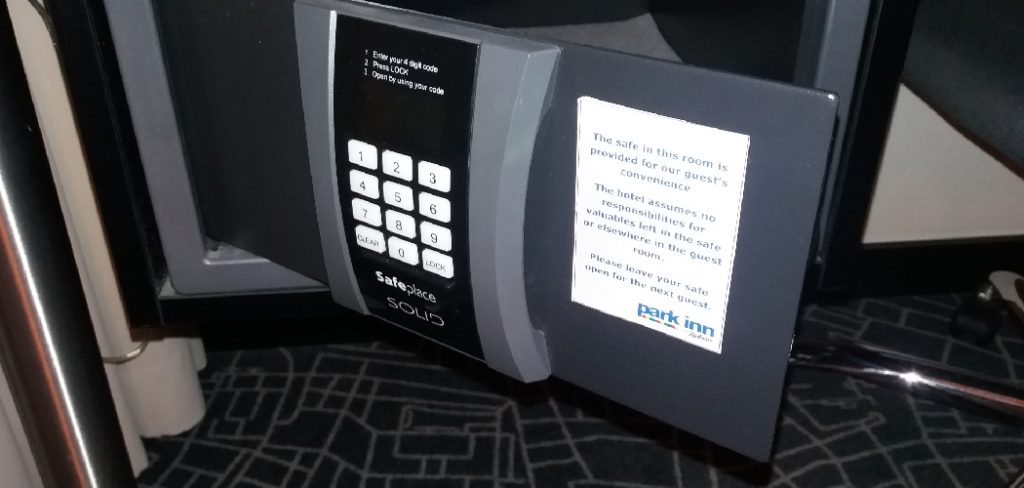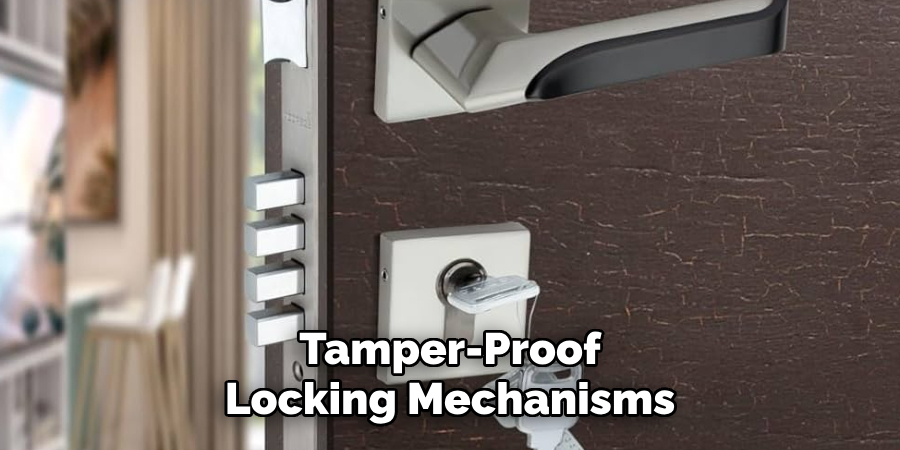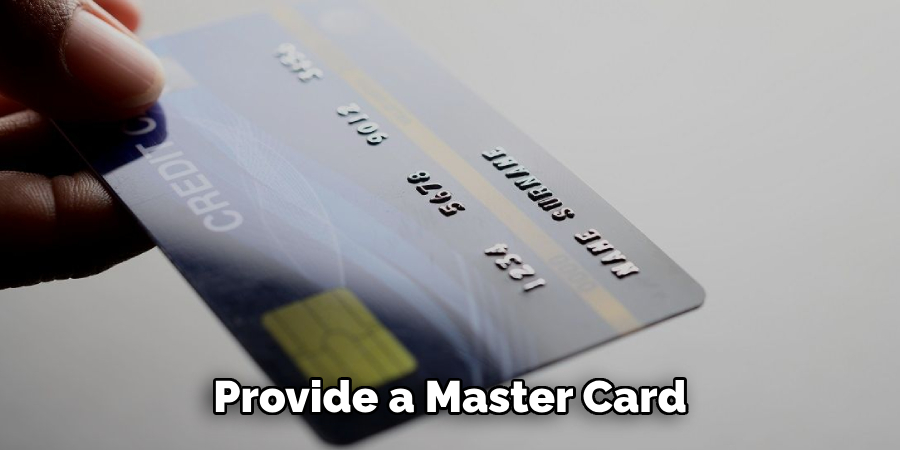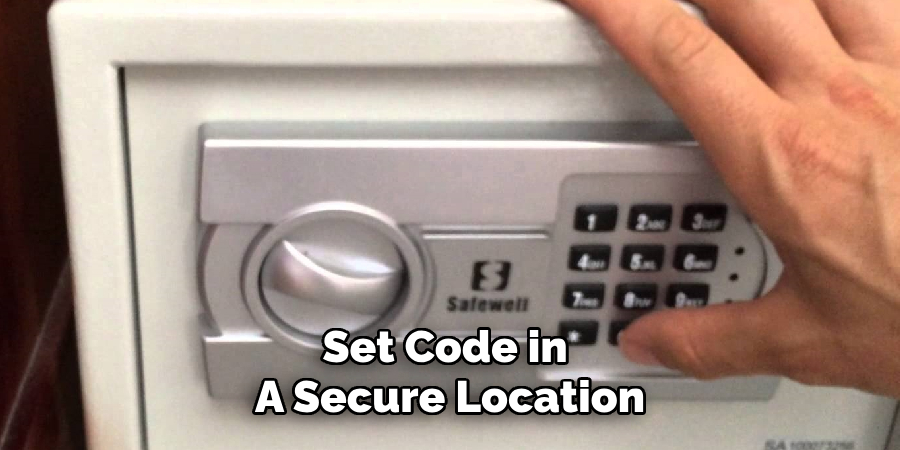Knowing how to reset a hotel safe is crucial for ensuring personal security during your stay. Hotel safes are designed to provide guests with a secure space to store their valuables, but they occasionally require resetting due to common issues like forgotten codes or technical malfunctions. Understanding the reset process can prevent unnecessary stress and potential security risks.

This article will cover the different types of hotel safes, the basic components and functions, and the necessary preparations before resetting. Additionally, we will provide a step-by-step guide on how to reset hotel safe, including keypad, card swipe, and biometric models. Troubleshooting tips for common issues and advice on when to seek professional help will also be discussed.
Ensuring you are well-informed about the process enhances your ability to maintain security and efficiently handle any problems that may arise.
Understanding the Hotel Safe
Types of Hotel Safes
Hotel safes come in various types, each designed to suit different security needs. The most common type is the keypad safe, which requires a user-entered code to unlock. These are widely used due to their ease of use and reliability. Card swipe safes operate using a magnetic card, often the same card that gives room access, which provides an additional layer of convenience.
The latest advancement in hotel safes is the biometric safe, utilizing fingerprint recognition technology for access. This type is highly secure and eliminates the need for codes or cards. Despite their differences, all hotel safes share common features such as solid steel construction, tamper-proof locking mechanisms, and override options for emergencies.

Basic Components and Functions
Understanding the basic components and functions of a hotel safe is essential for effective use. The keypad is used to enter the code, the locking mechanism secures the door, and the reset button allows for the resetting of the code. The keypad often features a digital display that confirms input and operational status. The locking mechanism, typically motorized, ensures that the safe remains impenetrable when locked.
The reset button, sometimes located within the battery compartment or on an interior panel, is crucial for initializing a new code or resetting the existing one. Familiarizing yourself with these components will make operating and troubleshooting your specific safe model easier.
Preparation Before Resetting the Safe
Gathering Necessary Information
Before resetting a hotel safe, it is essential to gather all necessary information. Start by locating the user manual or the manufacturer’s instructions, often found inside the safe or by the hotel staff. These documents contain specific details about the reset process, including default codes and procedural variations based on the safe model.
Additionally, inspect the safe for any visible reset buttons or keyholes, commonly situated inside the battery compartment or on the interior of the door panel. Identifying these features in advance will streamline the resetting process.
Safety and Security Precautions
Safety and security precautions are paramount before resetting a hotel safe. Ensure the safe is completely empty to avoid accidental loss or mishandling of valuables during the reset process. This step prevents potential confusion and ensures all items are accounted for.
Additionally, keep backup keys or reset instructions in a secure location, away from unauthorized access. This measure ensures that you have an alternative method to access the safe in case the reset process encounters issues or if the new code is forgotten. Taking these precautions helps maintain high security and smooth procedure execution.

How to Reset Hotel Safe: Step-by-Step Guide
Step 1: Using the Master Code
Resetting a keypad hotel safe often begins with entering the master code. The master code is a pre-set sequence provided by the hotel management or outlined in the safe’s user manual. To start the reset process, input the master code on the keypad. If successful, you will typically see a confirmation message or hear a beep indicating the code has been accepted.
If the master code is unknown, first check any documentation the hotel provides or that is located inside the safe. If the manual or visible instructions do not contain the master code, contact the hotel’s front desk or maintenance team. They can provide the necessary information or assistance required to reset the safe. Sometimes, hotel staff may need to reprogram the safe to restore functionality, especially if the code has been changed from the default setting.
Step 2: Accessing the Reset Button
Once you have entered the master code, the next step is to locate the reset button. This button is usually hidden to prevent unauthorized access. Common locations include inside the battery compartment or on the interior panel of the safe door. Open the safe’s door and carefully inspect these areas to find the button.
After locating the reset button, press and hold it until you see a prompt on the digital display or hear a beep indicating that the safe is ready for a new code. Remember that you may need to hold the button for several seconds. Follow any on-screen instructions that appear during this process. This step ensures the safe is in programming mode and ready to accept a new code, making it crucial for a successful reset.

Step 3: Setting a New Code
You can now set a new code with the safe in programming mode. Enter your desired code on the keypad and press the set or enter button to confirm. The safe may require you to input the code again for verification, ensuring accuracy and reducing errors. Be sure to follow the specific instructions provided by the safe’s manufacturer, as procedures can vary slightly between models.
When selecting a new code, choose one that is both secure and memorable. Avoid easily guessable sequences like “1234” or birthdates. Instead, opt for a combination of numbers that are significant to you but not easily connected to your identity. Write down the new code and store it in a secure location separate from the safe to prevent forgetting it in the future. Following these steps helps maintain the integrity and security of your valuables within the safe.
Resetting Card Swipe or Biometric Hotel Safes
Card Swipe Safes
Resetting safes that use a card swipe mechanism is straightforward. First, ensure you have access to the original card used for setting up the safe. Then, swipe the original card through the card reader while the safe door is open. After a successful swipe, you should hear a beep or see an indicator light, signaling that the safe is now in programming mode.
Next, swipe the new card you wish to use for future access. The safe will often confirm the reset with another beep or light signal. It is crucial to use the same card for both resetting and future access. This consistency ensures that the safe recognizes a single, authorized card, minimizing the risk of unauthorized access.
If you lose the original card, contact hotel management or the safe’s manufacturer for alternative reset instructions. They might provide a master card or guide you through additional steps to restore access and security.

Biometric Safes
For biometric safes, resetting involves deleting and re-registering fingerprints. Begin by opening the safe and locating the biometric sensor, usually inside the safe door. Most biometric safes have a reset button near the sensor; press and hold this button until a prompt appears on the digital display indicating it’s ready for a new fingerprint registration.
To delete existing fingerprints, follow the manufacturer’s specific steps, which typically involve re-confirming the reset action through the menu or the keypad. Once all registered fingerprints are deleted, you can start the process of re-registering authorized fingerprints.
For each user, place a finger on the sensor and hold it until the scanner successfully reads the fingerprint. The safe may require multiple scans for each finger to ensure accuracy. Ensure all authorized users re-register their fingerprints to maintain access. This step is vital to guarantee that the safe correctly recognizes all individuals who need access while preventing unauthorized entries.
Troubleshooting Common Issues
Unresponsive Keypad or Lock Mechanism
An unresponsive keypad or lock mechanism can be frustrating, but addressing it promptly ensures continued security. Common causes include drained batteries, faulty wiring, or keypad damage.
Start by checking the battery compartment and replacing the batteries if necessary. If the keypad remains unresponsive, inspect visible wiring for any damage and ensure all connections are secure. In cases of physical damage to the keypad, contact hotel management or a professional technician for repair or replacement.
If the lock mechanism is stuck, gently jiggling the safe door while entering the code may help release it. Avoid using excessive force to prevent further damage.

Forgotten Codes or Lost Keys
Situations where the code is forgotten or keys are lost require prompt action to regain access without compromising security. Immediately inform hotel management or the maintenance team, who can provide assistance. They typically have master codes or specialized tools to open the safe and reset the code.
Never attempt to force the safe open, as this can damage the locking mechanism and the safe itself. It’s crucial to follow hotel protocol to ensure secure and proper access. These precautions safeguard your valuables and maintain the integrity of the hotel’s security measures.
When to Seek Professional Help
If your safe is malfunctioning or shows signs of damage, it’s crucial to seek professional help to avoid further complications. Indications that you may need assistance include persistent keypad issues, a lock mechanism that fails to engage, or unusual noises when operating the safe. In such cases, contact hotel staff immediately; they often have master keys or can initiate protocols to secure your valuables.
If the hotel staff cannot resolve the issue, they may recommend a professional locksmith. Ensuring prompt and professional attention safeguards your items and maintains the security standards of the hotel.
Preventive Measures
Regularly testing the safe to ensure it’s functioning correctly is essential for maintaining its reliability. Periodically open and close the safe, inputting the code, or using the biometric scanner to verify that all mechanisms operate smoothly. Additionally, keep a written record of the set code in a secure location, separate from the safe itself, to avoid potential lockouts.

When setting new codes, use combinations that are both memorable and secure. Avoid easily guessable sequences and opt for numbers that hold personal significance but are not directly tied to your identity. These steps help maintain security and optimal performance.
Conclusion
Resetting a hotel safe is a manageable process when you know the right steps. For card swipe safes, start by using the original card, then swipe the new card to complete the reset. For biometric safes, delete existing fingerprints, and re-register authorized users’ fingerprints. Familiarizing yourself with these “how to reset hotel safe” procedures ensures you can control your valuables.
Maintaining security is paramount; always handle the safe with care, regularly test its functions, and keep a secure record of your code. If equipment malfunctions or complications arise, seek professional help promptly to prevent further issues. Following these preventive measures guarantees reliable safety and effectively safeguards your belongings.
